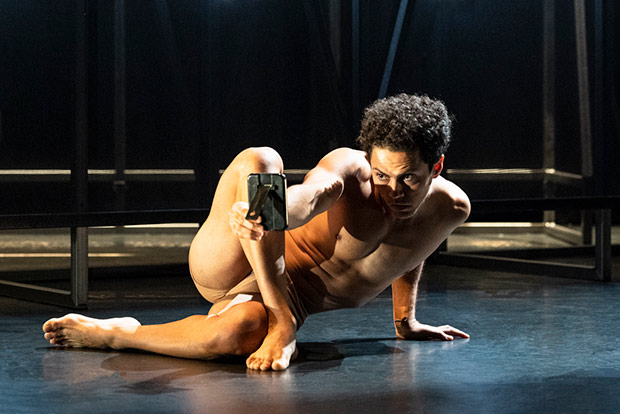
© Foteini Christofilopoulou. (Click image for larger version)
Shobana Jeyasingh Dance
Staging Schiele
★★★★✰
London, Queen Elizabeth Hall
4 November 2019
Gallery of pictures by Foteini Christofilopoulou
www.shobanajeyasingh.co.uk
www.southbankcentre.co.uk
The subtext to Shobana Jeyasingh’s latest creation is that it was inspired by the work and life of artist Egon Schiele. But, like me, Jeyasingh came to Schiele by way of his death; in her case, through research for her previous work, Contagion, which commemorated the centenary of the Spanish flu pandemic, in 1918. It killed more people than the First World War, two of whom were Schiele’s pregnant wife, Edith, and – three days’ later – the artist himself. One of the most haunting of Schiele’s many affecting images is of Edith asleep, just before she died, drawn by him before he became ill, unaware of his own imminent demise at the early age of 28.
Schiele is one of the most fascinating of early twentieth century artists, a pioneer of Modernism alongside his mentor, Gustav Klimt, in the fascinating avant garde of the Viennese Secession. Both artists were extraordinary draughtsmen, but both chose to oppose academic formality and false modesty, producing drawings of an intense raw eroticism. Schiele’s series of nudes around the beginning of the war are extraordinarily powerful and disconcerting: the faces of his models (invariably, at that time, young Viennese prostitutes) are strong, their gaze as powerful as the intrusive gaze of the artist. Their bodies are dislocated, twisted, bony with twirling masses of pubic hair and Schiele’s only concession to colour being orange lips and nipples. It wasn’t just women that Schiele laid bare with such rawness; he also drew naked self-portraits in similar style.
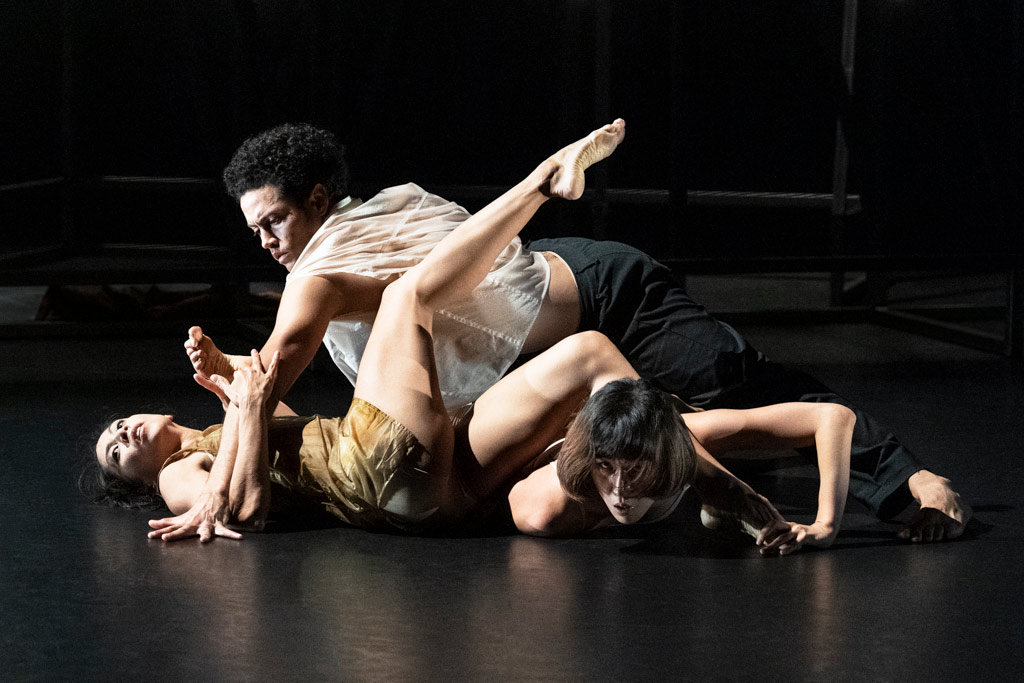
© Foteini Christofilopoulou. (Click image for larger version)
It is unusual for artists to become the source of dance. Rodin has been interpreted in recent years by both Russell Maliphant and Boris Eifman but the sculptor is an exception that largely proves the rule. It is a courageous challenge that Jeyasingh has taken on and it is accomplished in this hour-long work with considerable style and, one senses, a great deal of research. Time and again I found myself seeing Schiele’s art in the dancers’ poses, although tastefully clothed with nude-coloured shorts and leotards as a last resort (costumes designed by Cottweiler). I know nothing of the research and development for this work but I would suggest that it involved an intense study of Schiele’s art (by coincidence there was a tremendous exhibition at the Royal Academy, earlier this year, featuring works of both Klimt and Schiele on loan from Vienna’s Albertina Museum).
Jeyasingh cast four of the strongest contemporary dancers on the planet with Dane Hurst essaying Schiele, supported by Catarina Carvalho, Sunbee Han and Estela Merlos, representing variously Schiele’s mother, Marie, with whom he had a torrid relationship; his lover and model, Wally Neuzil, who also died young (of scarlet fever while serving as a nurse during the war); and wife Edith. Key aspects of Schiele’s life were jettisoned, such as his strong association with Klimt, which clearly didn’t play to Jeyasingh’s thematic approach of Schiele’s relationship with women. Jeyasingh’s focus on the gaze – both of the sexual intrusion of the artist and the counter gaze of the model – was strongly represented, especially by the enigmatic Merlos who seemed to hold onto the vision of every audience member with the strength of her stare.

© Foteini Christofilopoulou. (Click image for larger version)
Hurst was mesmerising throughout the work, not least in his long opening solo of dislocated and twisted movement, holding what I first took to be a mobile ‘phone (incongruous or what!) but turned out to be a pocket mirror. It was an arresting, absorbing, virtuoso feat of great strength and subtlety.
The set design by Ben Cullen Williams was enhanced by the strong lighting of Adam Carée and the mangled, distorted video designs of YeastCulture (including several deconstructed photographic images of Schiele). The set provided an inside and outside area, both clearly in view, and it seemed relevant to two aspects of Schiele’s life: the domestic constraints and parental expectations of middle-class life in early twentieth century Vienna; and the Neulengbach period in which Schiele was gaoled, for having pornographic drawings in a place accessible to children. The three months’ spent imprisoned were the lowest point in the artist’s life as evidenced by a series of discomforting paintings he made at the time.
The most courageous choice was to opt for a bespoke score by Orlando Gough, which is remarkably eclectic, managing to be both intensely modern and yet still evocative of the period of Schiele’s last years. It includes spoken text (poems by Schiele and Rainer Maria Rilke) and repetitions of the word ‘stop’, which Schiele apparently said to his models when he became satisfied with a pose.
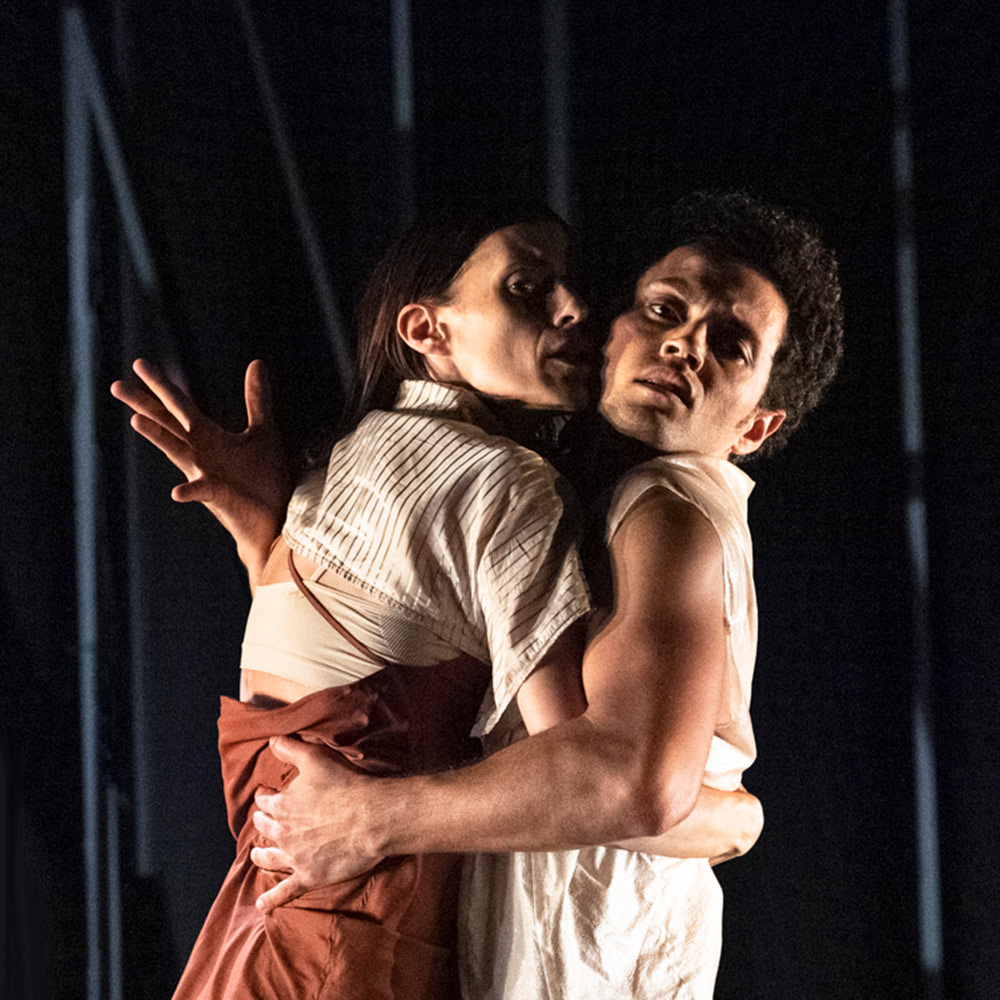
© Foteini Christofilopoulou. (Click image for larger version)
Jeyasingh has directed a work in which all the elements integrate seamlessly to provide a satisfying, if fleeting, picture of a life. The finale of Schiele and Edith dying in the fading light, the end emphasised by a final utterance of “stop”, was disconcertingly beautiful.
In an unusual but welcome postscript anyone can see a filmed version of this performance, which is to be posted online from 5pm on Friday 15 November on the company’s website (link). It won’t be happy viewing but it is certainly well worth watching.












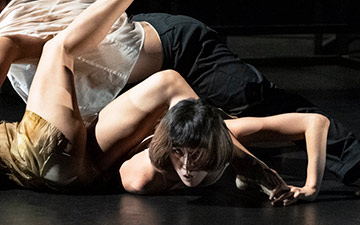
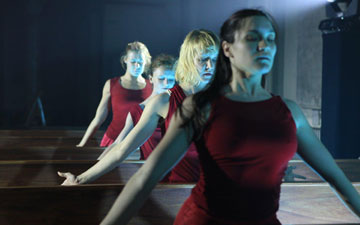


You must be logged in to post a comment.